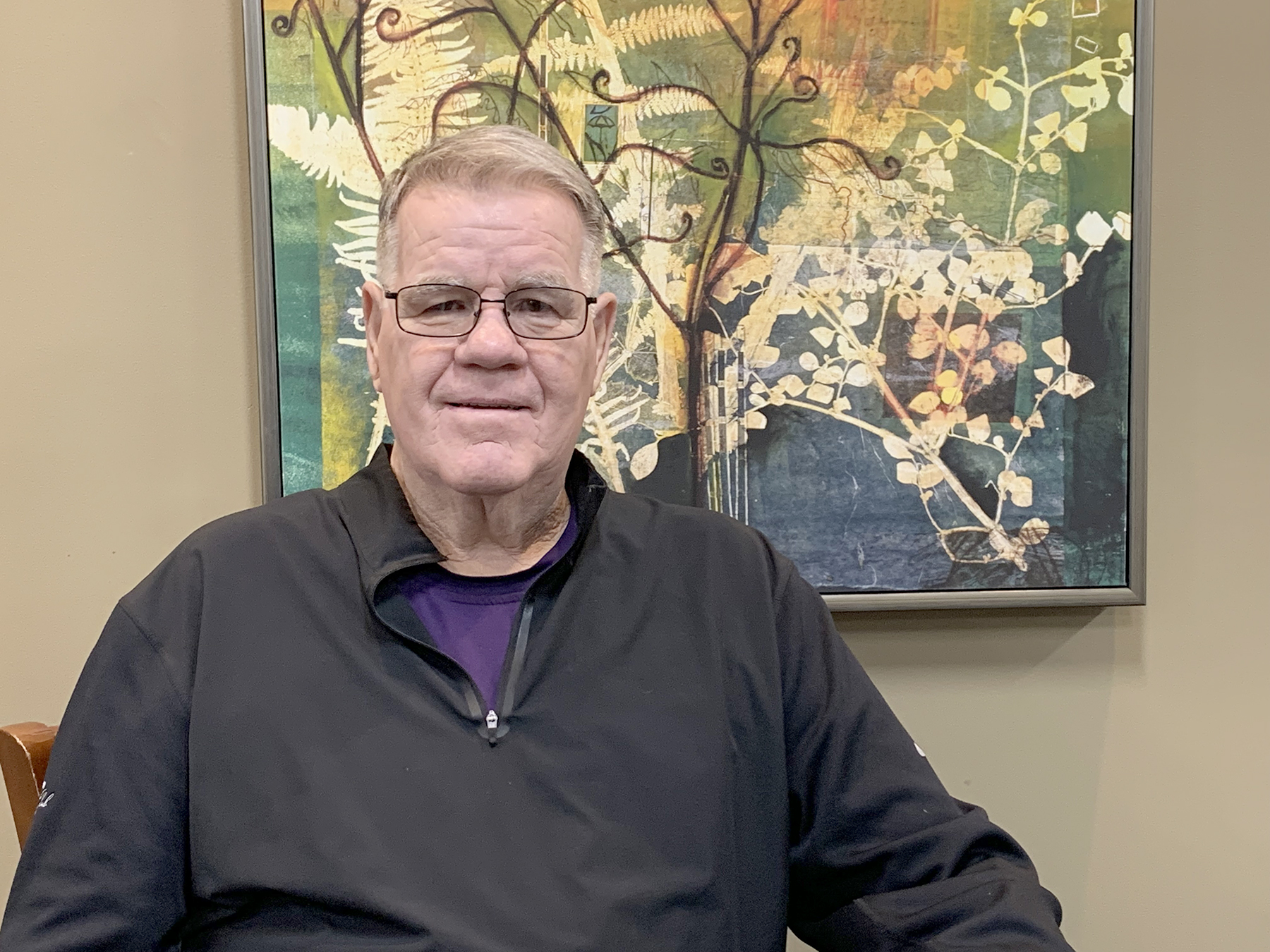
Mike Metcalf invested 28 years of his life defending freedom around the world as a soldier in the United States Army. Today, the 76-year-old Palmyra, Missouri, resident celebrates his freedom. His medical freedom.
Mike is free from needing to take blood thinners due to a heart problem. How did he earn that freedom? Mike became the 100th patient to receive a device known as a Watchman from board certified and fellowship trained cardiologist and electrophysiologist, Dr. John Hammock, of Blessing’s Heart & Vascular Center.
Dr. Hammock and his team implanted a Watchman in Mike’s heart to eliminate the life-threatening side effects of non-valvular atrial fibrillation. Afib, as it is known, is a condition that leads to spontaneous instances of irregular and very rapid heartbeat and can lead to blood clot formation, and possible stroke.
“An active life is important to me,” Mike said. “The Watchman gave me back my freedom.”
About Afib
Episodes of Afib restrict blood from being efficiently pumped from the heart. When the heart can't pump out blood effectively, the blood can sometimes pool in the heart and form a blood clot. Blood clots can cause a stroke.
For many years, a person living with Afib not caused by a heart valve problem had no other choice than to take blood thinners to reduce the risk of blood clot formation. Blood thinners come with concerning side effects of their own. Their job is to keep blood from clotting. Because of that, blood thinners also increase the chances that a person could bleed too much and the situation would be difficult to control. Although infrequent, bleeding caused by blood thinners can be very serious or life-threatening. Lifelong use of blood thinners can also be costly.
How Watchman helps

The Watchman device does not cure Afib. It stops the blood clot formation due to Afib.
The size of a quarter, Watchman is placed permanently into the area of the heart where blood typically pools and forms clots. It diverts blood from the area so it cannot pool and form blood clots.
“It’s a one time, minimally invasive procedure that can permanently reduce the risks of stroke without the worries that come with the lifelong use of blood thinners,” stated Dr. Hammock. “Ninety-six percent of patients are able to stop taking blood thinners 45 days after their Watchman procedure with a reduced risk for stroke.”
“It is exciting to see patient’s faces when we tell them they can transition off their blood thinner, once an adequate seal has formed over the Watchman implant,” added Diana Weatherford, RN, Structural Heart Navigator, Blessing Heart & Vascular Center.
Mike’s story
Mike experienced his first Afib episode in 1990. In the Army serving in Germany, he had just finished a more than 12-mile trail run and was having lunch with a friend who happened to be a doctor.
“I felt my heart just start beating crazy. I told my friend, ‘My heart’s running away.’ He told me you can’t feel your heart beat. But when he took my pulse he said, “We’re going straight to the hospital.”
It was atrial fibrillation. Most people cannot feel their Afib heartbeat. For some reason, Mike can. He began taking blood thinners and, in an attempt to address his Afib, Mike had two ablations while in the Army. Ablation is a procedure to interfere with the electrical signals that cause irregular heartbeats. This can help eliminate episodes of Afib.
The ablations reduced the frequency of Mike’ Afib, but did not stop it completely. His use of blood thinners continued.
Several years later, life threw Mike another curve. He experienced bleeding in his brain due to a genetic defect. It left him in a coma for two months. As a result, Mike had to stop taking blood thinners for many years, but his Afib continued as did his risks for blood clots and stroke. So eventually he returned to taking blood thinners as needed during Afib episodes.
Mike finds an answer

After living around the world during his military service, upon retirement Mike and his wife of 40 years, Barbara, moved to Palmyra to be closer to family. Mike became a patient of board-certified and fellowship trained physician Gina Pontius at the Palmyra Clinic.
“Dr. Pontius told me there was a doctor in Quincy who specialized in this and he was tremendous,’ Mike said.
He made an appointment with Dr. Hammock. After that first appointment, Dr. Hammock performed a couple of ablations. However, ablation would not address his Afib. Dr. Hammock and Mike then talked about the Watchman procedure to eliminate Afib’s risk of blood clot formation and stroke.
An intelligent man, Mike did his own research on the Watchman. What he heard and read confirmed what Dr. Hammock had told him about the benefits.
“I had no apprehension at all,” Mike said about the procedure.
Thanks to his Watchman, by mid-January of this year – after years of using blood thinners - Mike no longer had to take them.
Freedom.
“I don’t have to worry about blood thinners. You have to take blood thinners twice a day, on time, 12 hours apart. It’s a pain. Not for me anymore.”
Mike may still have Afib episodes, but he has ways to manage them by himself, or with the help of Dr. Hammock’s team, without concern for blood clots and possible stroke.
“Dr. Hammock and his staff have been phenomenal,” Mike concluded. “I trust them completely.”
What’s next for Mike?
Mike and Barbara will soon be on the road to Arizona to see their daughter and Mike will do what he loves - go crappie fishing at Roosevelt Lake. This trip will be different, though – no worries about taking blood thinners, thanks to his Watchman and Dr. Hammock and his team.
For more information on Watchman, and all the services of the Blessing Heart & Vascular Center go to blessinghealth.org/heart.
